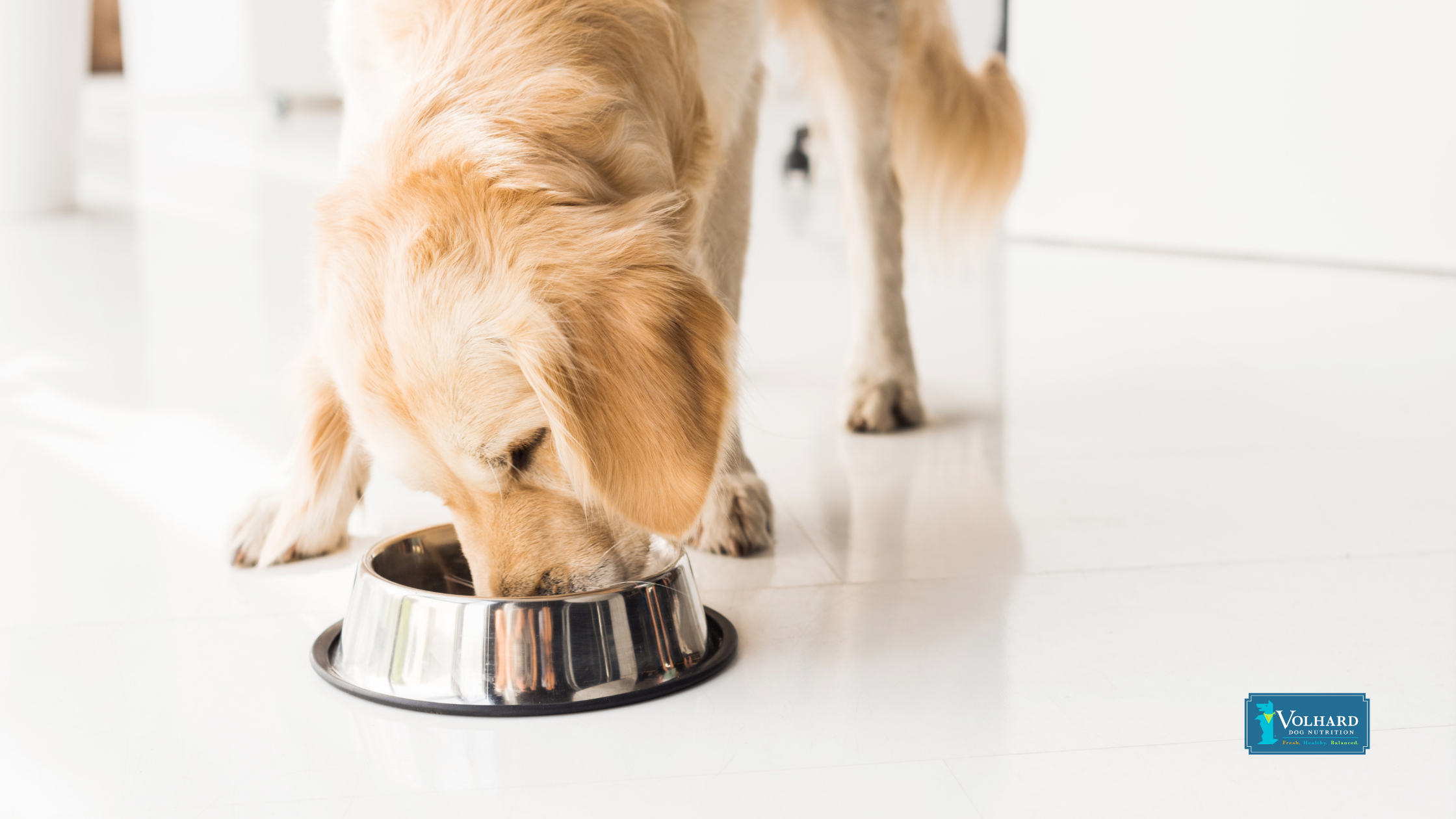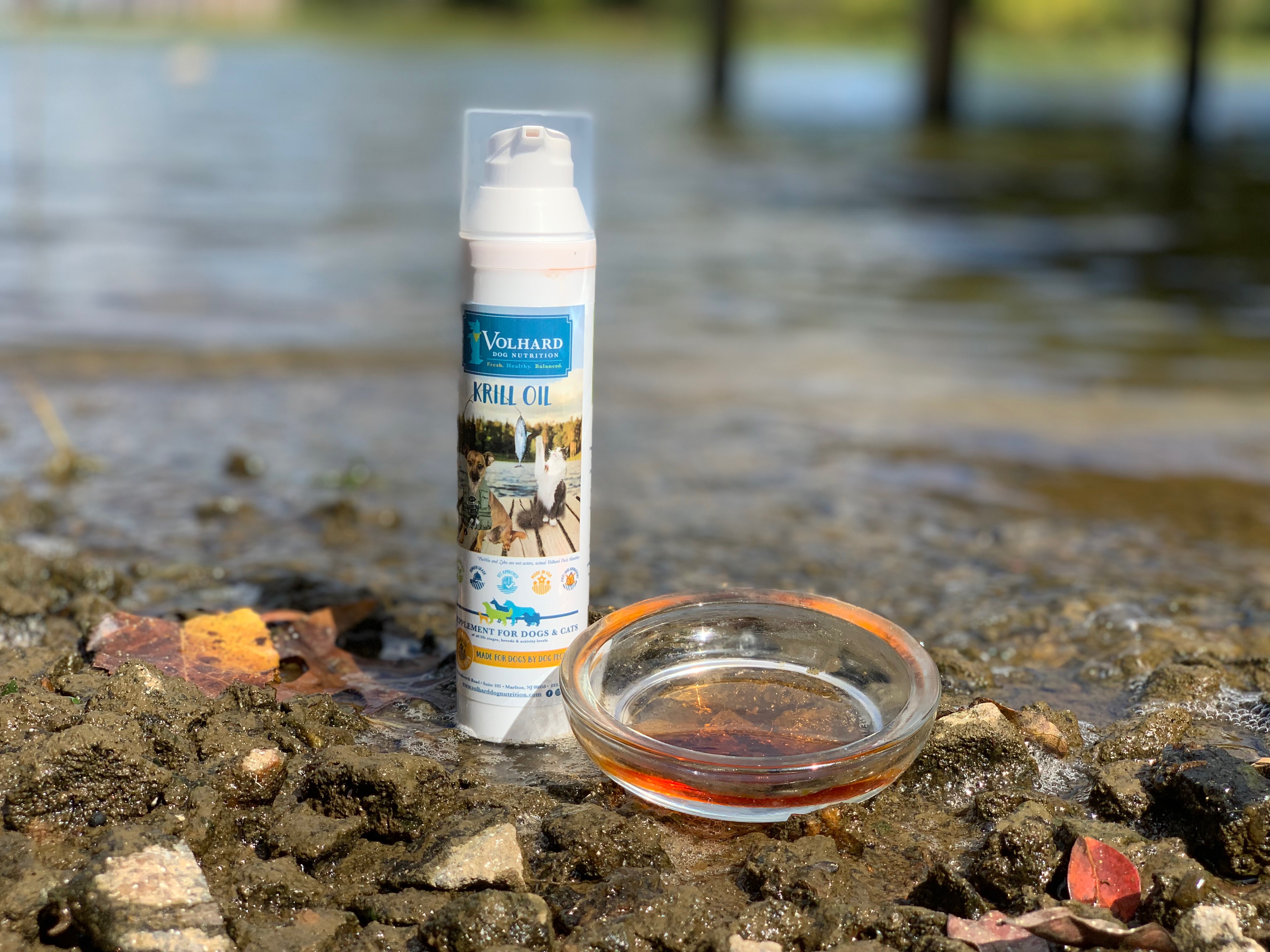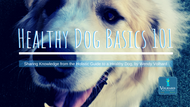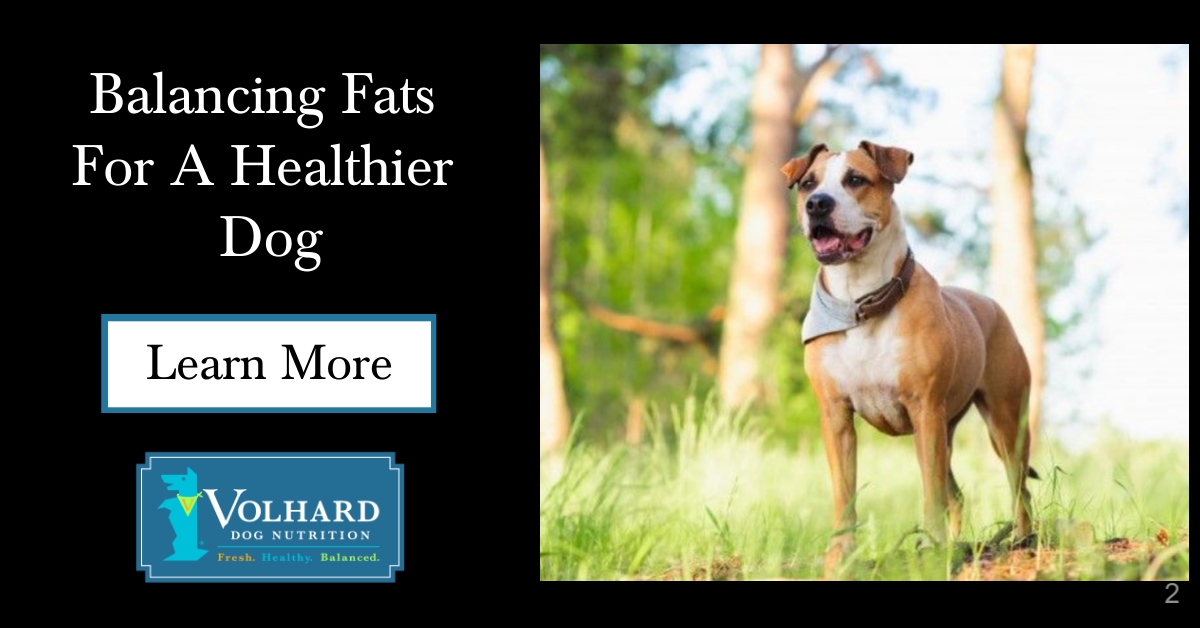Does My Dog Need Fats? | Healthy Dog Basics 101
Posted by Danae Apel on Jul 15th 2020
(Adapted from chapter 3, pg. 11-13, of The Holistic Guide for a Healthy Dog, 1st Edition by Wendy Volhard)
There are six key building blocks for a proper nutritional foundation, let’s discuss fats.
Does my dog need fat in his diet? The short answer is yes!
Here are some reasons why:
- Fat provides necessary energy as well as aid in supple skin and coat formation.
- It is needed for other nutrients to be properly absorbed.
- Fat transports fat-soluble vitamins A, D, E, and K.
- It aids in the digestion of vitamin D, which is needed to utilize calcium in the body.
- It keeps cells strong and supports a healthy nervous system, brain, liver, blood, skin, and hormone function.
- Fat protects vital organs from trauma and helps regulate body temperature.

The word “fat” tends to get negative associations in our society. It is very important to remember that this macronutrient is vital to the wellbeing of both humans and animals. For dogs, fats play a vital role in the proper functioning of cells, body tissues, skin, and coat to name a few! The key is getting the proper amount of fat from the appropriate source! As with many things regarding food and nutrition, not all fats are created equal and balance over time is necessary.
Differences in Fats
Fats are a source of concentrated energy for your dog, also known as calories. Fats typically contain twice the amount of calories as protein and carbohydrates. Fats provide 9 calories per gram, whereas protein and carbohydrates come in at 4 calories per gram. Because of this fact, a dog will eat less of high-fat food, which can lead to nutrient deficiencies. Furthermore, fats are made up of fatty acids, some of which are referred to as essential fatty acids (EFAs) because they cannot be produced by the dog’s body; EFAs must be obtained through the diet in the correct ratios. There are five EFAs that dogs need. Linoleic acid (LA) and arachidonic acid (ARA) are omega-6 fats. Eicosapetaenoic acid (EPA), docosahexaenoic acid (DHA), and alpha linolenic acid (ALA) are omega-3 fats.
There are two main categories of fat. That which comes from an animal source is called saturated fat. And that which typically comes from a plant source is unsaturated fat; it’s important to note, some fish are higher in unsaturated fats. Another way to think of these two can be that saturated fats are typically solid at room temperature, whereas unsaturated fats tend to be liquid at room temperature. Dogs need both types of fats. Animal fats provide the most concentrated form of energy. They are typically identified on dog food bags as poultry fat or beef tallow. Poultry fat, from chicken or turkey, is a good source of essential fatty acids: linoleic acid (LA), alpha-linolenic acid (ALA), and arachidonic acid (AA). Unsaturated fats can be further broken down into two additional categories: Monounsaturated and Polyunsaturated (PUFAs); polyunsaturated fats offer many of the previously mentioned five EFAs for dogs. Plant fats typically come in the form of oils such as wheat germ, sesame seed, hemp, walnut, corn, lecithin, soybean, flaxseed, olive, or safflower oils. Krill and cod liver oils are good sources of PUFAs as well.
Digesting Fats
When food enters a dog’s stomach, the fat is digested last. When fat enters the small intestine, it is broken down by the bile secreted by the gallbladder. Enzymes released by the small intestine and pancreas then release the fatty acids to be utilized by the body. Whatever is not absorbed by the body will then be removed through waste. Again, too much fat can be dangerous, possibly leading to hyperlipidemia (high cholesterol for dogs), heart disease, mammary tumors in females, and some forms of cancer.
So how much fat does a dog need? This depends on your dog’s life stage. A young dog that is still very much  growing needs fats to stimulate that growth and maintain healthy skin and coat. It’s been shown that puppies that get too little fat can develop skin problems, which could be masked as allergies possibly leading to the use of medications or antibiotics. Adult dogs that tend to lead a more sedentary lifestyle do not need as much fat as that of an adult working dog. Fat can be stored by the body to utilize when needed. Stored fat for a sedentary dog can lead to obesity, whereas a working dog can use that stored fat for energy. Think sled dog working in freezing temperatures versus a house dog that loves his couch. Fats are very much necessary for healthy skin and coat; if your dog suffers from dry skin or coat, you may need to supplement with a healthy fat.
growing needs fats to stimulate that growth and maintain healthy skin and coat. It’s been shown that puppies that get too little fat can develop skin problems, which could be masked as allergies possibly leading to the use of medications or antibiotics. Adult dogs that tend to lead a more sedentary lifestyle do not need as much fat as that of an adult working dog. Fat can be stored by the body to utilize when needed. Stored fat for a sedentary dog can lead to obesity, whereas a working dog can use that stored fat for energy. Think sled dog working in freezing temperatures versus a house dog that loves his couch. Fats are very much necessary for healthy skin and coat; if your dog suffers from dry skin or coat, you may need to supplement with a healthy fat.
The fat content listed on a typical bag of dog food comes from multiple sources: animal, vegetable oils, and things like cereal grains. Fat content should be between 12-20% of the dry weight of the total diet. If you need to supplement your pup’s diet, you can utilize Volhard’s Krill Oil, a great source of Omega 3 fatty acids or Volhard’s Coconut Oil. You could also utilize cold-pressed safflower oil, a good source of linoleic acid.
 Sources of Fat for Your Dog
Sources of Fat for Your Dog
Saturated Fat:
- Beef
- Pork
- Lamb
- Poultry
- Eggs
- Dairy Products
- Coconut Oil
Polyunsaturated Fat:
- Krill Oil
- Cod Liver Oil
- Vegetable Oils
- Safflower Oil
- Wheat Germ
- Lecithin
- Olive Oil

What have we learned? Fats are needed! Both saturated and polyunsaturated fats are good sources of energy and essential fatty acids, necessary for good skin and coat. But, too much of a good thing is not always better; a high-fat diet can cause complications. Your dog’s life stage and activity level will help determine just how much fat his body needs. It is important to note that all Volhard Dog Nutrition diets are formulated to exceed the nutritional levels for All Life Stages, including the growth of large-size dogs.
Going forward, we will dive into preservatives and unhealthy sources of fat that are, unfortunately, very common in kibble pet foods. Stay tuned!
Additional References:
https://www.petmd.com/dog/nutrition/evr_dg_fats_and_oils_good_for_your_dogs_health
https://www.healthline.com/nutrition/omega-3-6-9-overview#section2
https://www.scielo.br/scielo.php?script=sci_arttext&pid=S1516-35982008001300004
https://www.hsph.harvard.edu/nutritionsource/what-should-you-eat/fats-and-cholesterol/types-of-fat/


